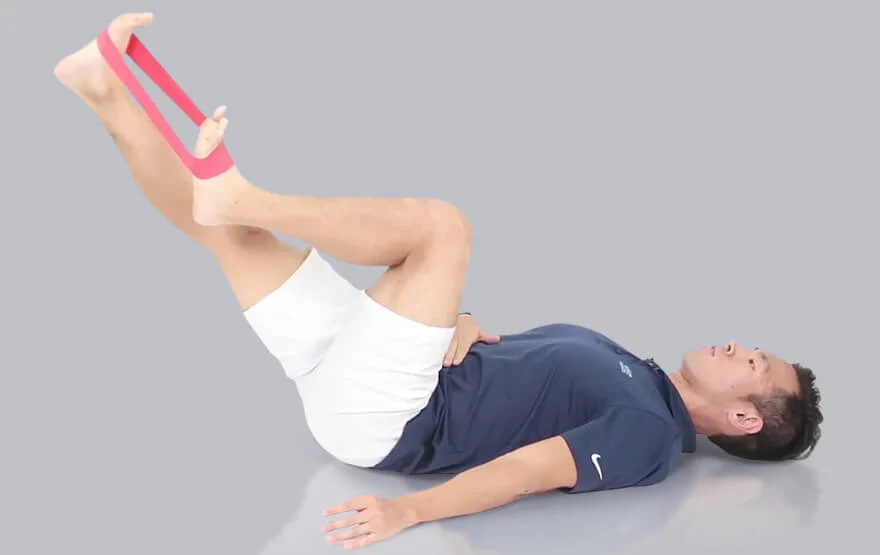Muscle strain is certainly not a new condition as we all might have had at least one time of experiencing it. It can be quite discomforting and even painful at times to experience it. Feeling strain can seem like a normal occurrence especially living in the modern world or when working too hard for the day. In this DoctorOnCall’s article, we will learn more about groin strain that may seem like a new health condition to you.
Before understanding more about groin strain, let’s know what exactly is the groin. The groin area includes the lower abdomen and upper thighs. There are around 30 muscles, tendons and ligaments attached together at the pelvis. The term groin strain is a description of pain in the inner thigh or hip region. It is often caused by overuse or overstretching the hip.
Groin strains commonly occur in the upper thigh muscles such as the adductor longus muscle or in one of the tendons attached to the adductor of the pelvis. Adductor longus muscles are muscles that help to pull the thigh together and rotate the upper leg inwards. It also stabilises the hip. This means that the muscle helps the thigh move from side to side. Abdominal pelvis that attach to pelvis such as the oblique muscle are also among the muscles prone to groin strains.
Groin strain is one of the most common strain injuries especially in sports such as football and ice hockey. Groin strain is often a result from muscle tear after an awkward or sudden movement. Movement such as twisting, turning, changing direction and kicking are among the common movements causing the groin strain. Simply slipping on a wet surface can also lead to the condition. Some people may mistake groin strain as “sports hernia” but it is not. It is a strain that occurs in teenagers and middle-aged athletes.
Symptoms are mainly the pain or tenderness to the groin area after a movement. Other symptoms include pain that increases when there is quick or strong leg movement, pain when raising knees or climbing the stairs and bruising or swelling in the groin area or the inner thigh. In severe cases, some may feel muscle weakness or spasms. Difficulty moving the leg can occur due to the pain. Pain overall can be from dull ache to a sharp one. Pain certainly gets worse when there is leg movement.
Due to the fact that groin strain is common in athletes, there are certainly risk factors that make an athlete much more prone to the injury. Sustaining previous injury in the groin can markedly increase risk for a groin strain. Loss of strength and lack of sports specific training can contribute to risk for a groin strain. Risk for groin strain is the same for all levels of athletes.
When you suspect a groin strain, what you can do is to practise the RICE method. Below are how RICE method should be done in the first 48 hours of the symptoms:
- Rest- avoid overstretching muscles and any activities that aggravates the pain
- Ice- apply ice packs for 10 to 15 minutes to ease swelling and pain
- Compression- simple elastic bandage or elasticated tubular bandage covering the area
- Elevate- raise the leg ideally at the same level of the hip
There are exercises that can be done after 48 hours when the symptoms start. Simple exercise such as floor stretch, chair lift, side lift, knee squeeze and knee bend can help a person get back on track with their normal daily life activity. These exercises help to gradually increase movement while strengthening the muscle. If the exercises cause worsening pain, the patient should reduce the frequency of the exercise or stop immediately. Patients should see doctors if symptoms do not subside. It is best to see a physical therapist to discuss a treatment program that aids in recovery.
While it is true that groin strain may not be fully prevented, there are ways of reducing the chances for falling into such injury. Warming up or light exercise before a sport or physical activity can prevent muscle damage. It is best to keep the same amount of exercise and avoid intense activity as sudden changes in the intensity can increase risk for injury. Those who just started exercising or not regularly exercise should always go slow and with light intensity to minimise injuries.
Those who already had groin strain might wonder how long it would take to heal. It will take around 1 week to months, depending on the severity of the injury itself. Most groin strains heals in a month or two. It is important to know that severe groin strain may take longer than this. Patients with groin strain are advised to ensure the strain is fully healed before moving on with daily life activities. It is best to get a green light from a doctor before performing any physical activities to avoid worsening the strain.

